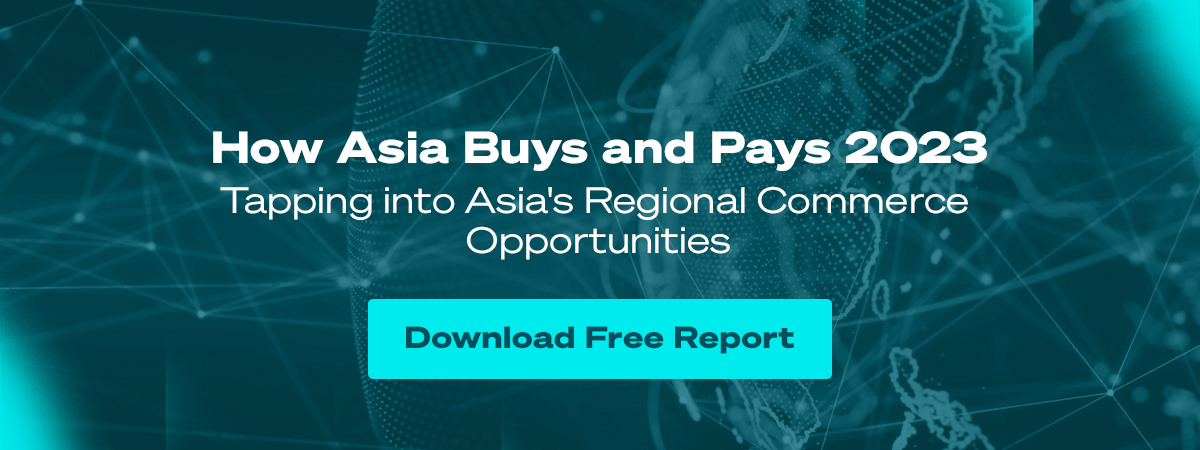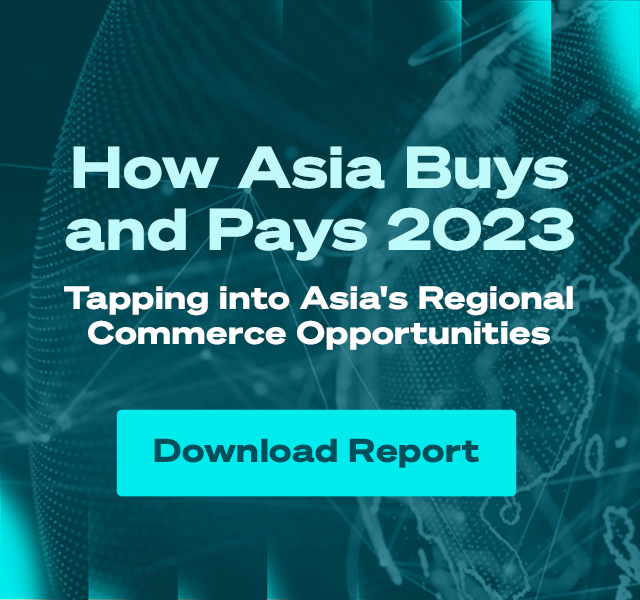
Payments Powerhouses: Digitising Businesses for Growth with Jerry Wee
In this instalment of Payments Powerhouses, 2C2P's own Jerry Wee, Director of Digital Goods, dives into the fascinating world of digital goods and services, and discusses digitalisation's transformative impact on businesses.


Jerry Wee is Director of Digital Goods at 2C2P.
With more than 15 years of experience in FinTech, Payments, E-commerce, FMCG, Supply Chain & Human Resources industry, Jerry is a specialist in innovation, strategic planning, business management, green field projects, commercial/product development, talent management and consultancy.
He has led several notable projects and pioneered key launches for Lazada and now leads and manages the regional expansion of the digital goods vertical at 2C2P.


Welcome to Payments Powerhouses, Jerry. You’ve been an entrepreneur, worked for leading ecommerce platforms, and now lead the Digital Goods and Services vertical at 2C2P. What led you down this path?
Jerry: I started my career in logistics, one of the last industries to be digitised. Even today, digitalisation efforts in the logistics and shipping industries continue to be pretty slow. I moved from logistics to becoming an entrepreneur, starting my own recruiting agency. That was my first introduction to the tech and e-commerce sectors. Many of my clients were startups and tech companies, and it opened my mind to how digitalisation helps companies become more efficient and increases their user base.
At 2C2P, I manage the end-to-end business cycle, starting from the commercial business development all the way down to the operations and even tactical elements. Typically in mature organisations, tech development and commercial business units are separate entities. But in my current role, we focus very much on consolidating everything because this space is continually evolving. We need to have an end-to-end view on continuous innovation to help us figure out what products we should be enhancing so that we can better serve the market.
What are the key categories in terms of your target reach?
Our customers are large enterprises, SMEs and consumers. 2C2P serves as a solutions provider to help different enterprises expand their reach to the market. Moving forward, we will focus more on product innovation within the SME segment to help them grow their business while minimising costs.
Speaking of product innovation for SMEs, could you cite specific examples?
Let's say you’re a mom-and-pop shop in Indonesia. Traditionally, you need to do some advertising and offer a wide variety of goods and discounts to attract people to your store. This means that you’ll need a big space, which means higher costs. 2C2P helps by offering a digital inventory without any form of tech enhancement or storefront expansion. You only need a mobile device with an internet connection to get access to more than 350 different billers.
Today, imagine that these mom-and-pop shops start offering bill payments. Consumers could just go to their neighbourhood store to make bill payments and shop for groceries at the same time.
This brings a lot more convenience to the general public, while shop owners can earn a sale commission while growing their customer base. We also have other products and services, for example, an invoicing platform that helps small SMEs better manage and collect payments from their users.
Although our Digital Goods and Services technology is still relatively new in Southeast Asia, we already have some success stories. For example, in Myanmar, where we’ve been for about three years, more than 60,000 retail points are already established. These are predominantly mom-and-pop shops, and at least 30,000 of them are small, individually-owned retailers. We saw how their business could grow, which, in turn, helped 2C2P to grow.
We’re now seeing markets like the Philippines get much more traction. The next phase for us is to grow our Indonesia and Vietnam markets, which are very similar. Using the same model, we want to help more SME customers grow their businesses.
What is important about digitalising the bill payment process for SMEs?
Let’s go back to the 80s or 90s, when paying bills took up hours of your day, queuing up at the post office or bank counters. The digitalisation of bill payments has completely changed the way we live. Today, bills are consolidated online, and we can pay via mobile banking apps. That, to me, is pretty exceptional.
How do we help businesses further digitalise bill payments? We recently developed a new product that supports SMEs, particularly sole proprietors of companies. Imagine if you repaired your television and had to do a PayNow transfer but forgot to give a reference code. The shop owner will have a hard time trying to trace back the payment. They might also lose track of outstanding invoices. So, instead of collecting more revenue by repairing more TVs, they’re spending a lot of time on collecting payments and issuing invoices.
Consumers today are quite pampered with payment choices, and products that helps SMEs manage the entire payment process, allows businesses to focus their time and energy on growing their business, rather than be tied down with administrative matters.
What markets or sectors have had successful digital goods and service transformation?
Singapore is a good example, where we have been educating our senior citizens to embrace technology. While we are one of the biggest digitised economies in Southeast Asia, I don't think it's just unique to Singapore. COVID undoubtedly accelerated the digitalisation of the economy.
I would say that QR code scanning is probably the most significant digitalisation event of the last three years. For example, it is no longer unusual for restaurants to provide QR codes for an e-menu or food ordering. Four years ago, asking customers to self-order wasn’t easy, but today, people prefer scanning menus to handling a hardcopy menu. Payments have also been simplified - there are no more queues at the counter. This has definitely been one of the better enhancements of user experience.
What are the major challenges for businesses looking to adopt digital goods solutions? How can we help to overcome them?
Companies’ biggest obstacles in digitalisation are technological capabilities and a shortage of tech talents. Economies started to digitise about 10 years ago, and governments only began emphasising technology education in about 2015. SMEs can’t compete with larger organisations regarding hiring or tech infrastructure.
That’s where digital solutions like ours come in. We build the capabilities and provide access - business owners just need to learn how to use it. When building product innovations or system features, we make sure that this product is easily usable by small companies or individuals. We also continue to provide more complex solutions for large enterprises without discounting the need for high security and personal data safeguarding.
Are there challenges convincing businesses to consider or even implement this solution?
There has been resistance, but companies are open to exploring. For many companies, the larger the business volume, the higher the touchpoint for the sales team.
Working with SMEs, my team takes a different approach: the lower the business volume, the higher the touch point, because we are trying to educate a whole new business segment or whole new industry. We believe in supporting SMEs by providing a dedicated salesperson to support their journey. This benefits us as well because these customers provide us with valuable feedback.
The emergence of NFTs and blockchain applications has added a new dimension to the industry. What will the future be like for the digital goods and services space?
It’s extremely exciting, but there is still uncertainty.
We’re only technically limited by how many data servers we need. We’re not limited by physical space - we can buy and sell anything that can be digitised. The market capitalisation or market growth potential is unlimited.
The harsh reality of the industry is government intervention, industry adoption, and ever-changing consumer behaviour. There's still work to be done by different parties: governments, businesses, and consumers. It depends on how everyone in the ecosystem - including various stakeholders within the industry - work together and progressively move forward.
Finally, do you have any advice for someone looking to get into fintech or switch careers?
Regardless of the industry, having resilience and a sense of responsibility are very important. You are going to face tons of challenges and difficulties on a daily basis. When hiring, I assess the individual’s aptitude for resilience because it will not be a walk in the park.
No business can grow without having trust in the team. When people place trust in you, you will give your best effort even though results may not show immediately.
. . .
Payments Powerhouses is a monthly editorial series interviewing the movers and shakers of the payments and wider fintech industry in Southeast Asia and beyond. If you’d like to be featured on Payments Powerhouses, reach out to us here.

